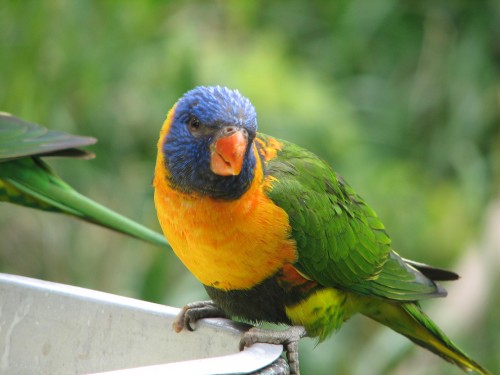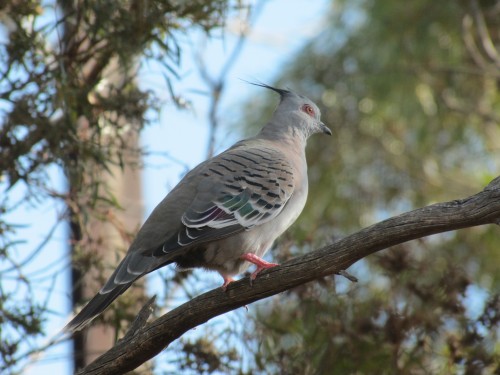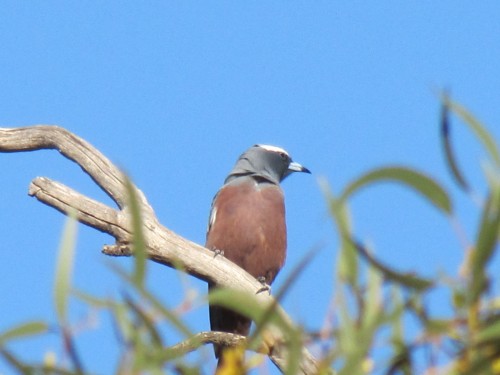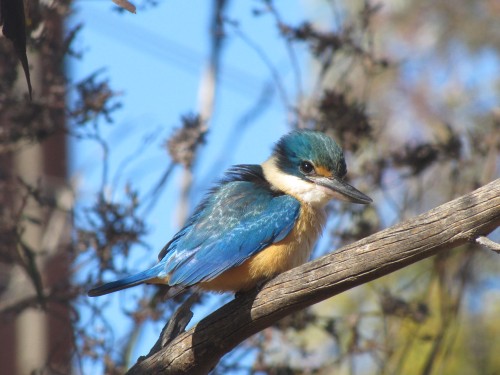Do I need a camera?
Frequently asked questions about birding #13
Do I need a camera when I go birding?
No.
But I guarantee you will be saying “If only I had a camera” far too many times.
I carry a small camera bag containing a small digital camera when I go birding. They are so small, light and easy to use. I’ve got so many wonderful photos over recent months that it has totally renewed my interest in photography.
A word of warning: always take spare batteries. I had a wonderful opportunity to take a photo of a rare bird once and the batteries died just a few minutes before. I now carry TWO sets of spare batteries! I’m a slow learner.
Update November 2013:
Since writing this article I have taken many thousands of photos, both here in Australia and overseas. I have included the best of them on this site. Browse through the archives for articles which might interest you; most have at least one photo. Below is a selection of just a few.
Road kills
On Friday and Saturday I had occasion to drive to Adelaide. From home to the city takes just under an hour to complete the 75km along the South Eastern Freeway. On the journey Friday I was concerned about the number of road kills I saw involving birds. On Saturday I decided to do a rough count; it was an estimate because I needed to concentrate on driving as well.
Here is a tally of the dead animals I saw on the side of the road:
- Australian Magpies 14
- Common Blackbird 1
- Stumpy Tailed Lizard 2
- Western Grey Kangaroo 1
The magpies have such a high count probably due to the young having recently fledged and not being able to fly out of the way of traffic as quickly, or perhaps not being as traffic savvy as the adults. Whatever the reason, it is sad to see so many animals dead in a relatively short stretch of highway. The sum total Australia-wide must be staggering.
Naturally these figures are only a very poor estimate of the total deaths. What I couldn’t count were the many others injured and unable to fly but not immediately killed. They would probably crawl or flap to a point away from the road to suffer a lingering, painful death.
It is a sad price to pay for the human impact upon the environment.
Birding in Thailand
On my visit to Thailand last December I primarily went as a tourist, not for the birding. It was my first ever trip overseas, so everything was new and exciting. I did, however, manage to get good views of a few species. I must write a post about that one day.
I recently came across a good web site on birding in Thailand. Birdwatching in Thailand may be very useful for anyone planning a trip to this wonderful country. The maps and trip reports are excellent, as are the hints on where to go to see birds and even thorough descriptions on how to get there and where to stay. THe photos are a bonus.
Highly recommended.
Related links:
- Birdwatching in Thailand – information, maps, checklist and trip reports
- Trevor’s Travels – my travel blog about Australia, Thailand and Nepal
Why have a bird note book?
Frequently asked questions about birding #12
What do I write in the notebook?
So you have decided to always carry a notebook and pen or pencil while out birding in the field.
What do you write in the notebook?
I usually write the date, the time, the location, the GPS reading, a list of every species seen and an estimate of how many birds present eg 30 pink Galahs, 3 Wood Ducks, 2 Crested Pigeons and a Partridge in a pear tree – oops – a partridge? I’d better take a few notes and do a quick sketch of its main features.
Here is another use for the notebook. I know that there are no partridges in Australia so I take notes. That way I can check in my field guides later when I get home and check my notes against the field guide notes. Oh – that should have been Partridge Pigeon. Of course.
If I had seen a Partridge Pigeon I would have been very excited. They are only found in the extreme northern edge of Australia, a long way from home. Any seen around here in Murray Bridge, South Australia would have to have escaped from someone’s aviary. I’m not sure if this species is kept in aviaries here in South Australia. One would have to have a special permit because this bird in vulnerable in its natural habitat.
This post was updated on 22nd October 2015.
A Cloud of Kites
I am trying to go for a morning walk every day.
For the good of my health.
Morning walks are very productive birding times here in Australia. Yesterday I saw and heard the usual suspects: honeyeaters, Galahs, Crested Pigeons, Little Ravens, Yellow Rumped Thornbills, House Sparrows and Common Starlings.
From time to time we have the odd Black Kite or two glide silently over head as we work in the garden. Rarely more than two but sometimes three or four can be seen at the one time. I was taken a bit by surprise to count a loose flock of 22 Black Kites circling at a spot nearby. This is unusual around here, though on one occasion a few years ago I did see at least 50 in one location. I assumed that there was a dead animal lying somewhere nearby, or perhaps a rubbish dump in the vicinity.
My experience with this species in Australia is for single birds or up to 3 or 4 together. I understand that they can congregate in large numbers elsewhere in Australia and in other parts of the world. On my visit to Thailand and Nepal last December-January I saw small flocks only. It seemed to be the main raptor in Kathmandu.
There probably isn’t a collective noun for Black Kites so I’ve made one up. A “Cloud of Kites” sounds good to me – it is perhaps an act of apt alliteration and acidic assonance? Kites are not mentioned in the Wikipedia entry on collective nouns for birds.



